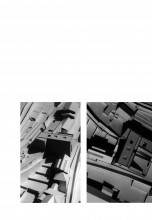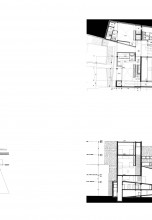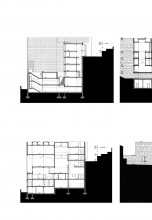The surrounding urban fabric plays a major role in determining the form of the new Center for Medieval Art building in Assisi, a perfectly preserved historic city in Umbria, Italy.
The design takes its cue from the extraordinary scale and typology of the nearby medieval granary building. Creating a “superfloor” by adjoining two narrow lots and bridging over a public road, the design meets the challenge of providing large spaces for exhibitions and an auditorium without disrupting the filigree of gothic lots that compose the city fabric of Assisi and, most importantly, its skyline of narrow towers.
The Center’s footprint blends into the uninterrupted fabric of the city by adopting the scale of the adjacent buildings, interconnecting with neighboring sites and ensuring a seamless urban integration.
Each of the three programmatic elements, the auditorium, the research facilities and the exhibition spaces, play a specific role within the given urban structure.
The auditorium redefines the street edge, anchoring the sequence of new volumes to the street and the square, while completing the interrupted lower row of houses.
Research facilities, laboratories and archives are combined in a vertical slab acting as a containing wall to the terraced garden at +60’ above street level. The garden also functions as a reflecting surface for the light entering the reading room through a large opening at the back of this volume. The vertical stacking of exhibition spaces bridges over the street and the main entrance, connecting the two opposite lots and providing an exceptional floor plate perpendicular to the slope and, therefore, invisible to the city skyline.
The complex of museum, auditorium and research facilities appears solid and fortified, reinforcing the image of dignity and sobriety. Like all successful civic architecture, these buildings suggest permanence.


